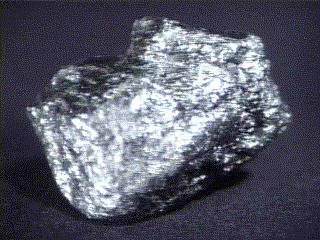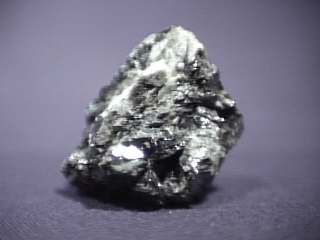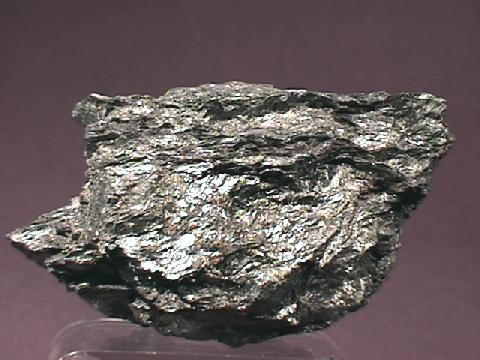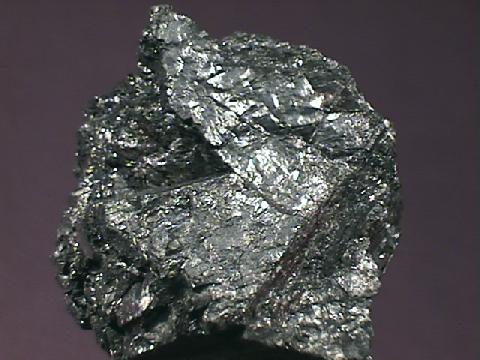 GRAPHITE
GRAPHITE
- Chemistry: C, Elemental Carbon
- Class: Native Elements
- Subclass: Non-metallics
- Group: Carbon
- Uses: for the lead in pencils, as a toughener of steel, in high-strength composites and as a lubricant.
Specimens
Graphite is a polymorph of the element carbon. diamond is another polymorph. The two share the same chemistry, carbon, but have very different structures and very different properties.
- Diamond is the hardest mineral known to man, Graphite is one of the softest.
- Diamond is an excellent electrical insulator, Graphite is a good conductor of electricity.
- Diamond is the ultimate abrasive, Graphite is a very good lubricant.
- Diamond is usually transparent, Graphite is opaque.
- Diamond crystallizes in the Isometric system and graphite crystallizes in the hexagonal system.
All of the differences between graphite and diamond are the result of the difference in their respective structures. Graphite has a sheet like structure where the atoms all lie in a plane and are only weakly bonded to the graphite sheets above and below. Diamond has a framework structure where the carbon atoms are bonded to other carbon atoms in three dimensions as opposed to two in graphite. The carbon-carbon bonds in both minerals are actually quite strong, but it is the application of those bonds that make the difference.
It may seem strange that one of the softest minerals (and a very slippery lubricant) is the high-strength component in composites used to build automobiles, aircraft, and of course golf club shafts. It is the weakly bonded sheets that slide by each other to yield the slipperiness or softness. Yet when those sheets are rolled up into fibers, and those fibers twisted into threads, the true strength of the bonds becomes apparent. The threads are molded into shape, and held in place by a binder (such as an epoxy resin). The resulting composites have some of the highest strength-to-weight ratios of any materials (excluding, of course, diamond crystals and carbon nanotubes).
Single sheets of graphite are sometimes called graphene. These sheets have tremendous relative strength, hence the uses referenced above. They also have other exceptional properties currently being researched, perhaps largely due to the 2-dimensional nature of the crystal structure.
Other polymorphs of graphite include:
- graphene
- These are essentially single-atom-thick sheets of graphite, which can be pulled from a crystal of graphite with something as simple as adhesive tape. Graphene sheets have potentially valuable characteristics such as unusual electrical and thermal conductivity, 2-dimensional strength, and extreme flexibility.
- carbon nanotubes
- Roll a graphene sheet into a tube shape (really a spiral) and you have the common graphite fibers described above. But when a single crystal is formed (the shape of a straw), the resulting structure is called a carbon nanotube. These have incredible tensile strength, plus extreme flexibility in the other directions. Very short crystals (microns) are trivial to form. Long ones (centimeters) would enable new ultra-high-strength materials. These nanotubes have a variety of diameters (the smallest can be imagined as eight hexagons arranged in a ring, then extended indefinitely). They can also appear to be symmetrical (the hexagons form a ring), or chiral (the hexagons form a spiral), with differing mechanical and electrical properties. Also, different diameters can be nested, forming multi-walled carbon nanotubes.
- buckyballs
- Roll a graphene sheet into a sphere and you have a buckyball. While many sizes are possible, most research has focused on the 60-atom size, called C60, which has the shape of a soccer ball. A common constituent of ordinary soot, buckyballs have many interesting characteristics, including the ability to trap a single atom of something else in its cage.
In a sense, carbon can form strong molecules in
- 3 dimensions: diamond
- 2 dimensions: graphene (stacks of these form graphite)
- 1 dimension: carbon nanotubes
- and 0 dimensions: buckyballs
Graphite can only be confused with the mineral molybdenite which is metallic bluish silver in color. However, molybdenite is much denser and has a silver blue streak.
Most graphite is produced through the metamorphism of organic material in rocks. Even coal is occasionally metamorphosed into graphite. Some graphite is found in igneous rocks and also as nodules inside of iron meteorites.
PHYSICAL CHARACTERISTICS:
- Color is black silver.
- Luster is metallic to dull.
- Transparency crystals are opaque
- Crystal System is hexagonal; 6/m 2/m 2/m
- Crystal Habits include massive lamellar veins and earthy masses. also as scaly granules in metamorphic rocks.
- Hardness is 1 - 2
- Specific Gravity is 2.2 (well below average)
- Cleavage is perfect in one direction.
- Fracture is flaky.
- Streak is black gray to brownish gray.
- Associated Minerals include quartz, calcite, micas, iron meteorites and tourmalines.
- Other Characteristics: thin flakes are flexible but inelastic, mineral can leave black marks on hands and paper, weakly conducts electricity.
- Notable Occurrences include New York and Texas, USA; Russia; Mexico; Greenland and India.
- Best Field Indicator is softness, luster, density and streak.








